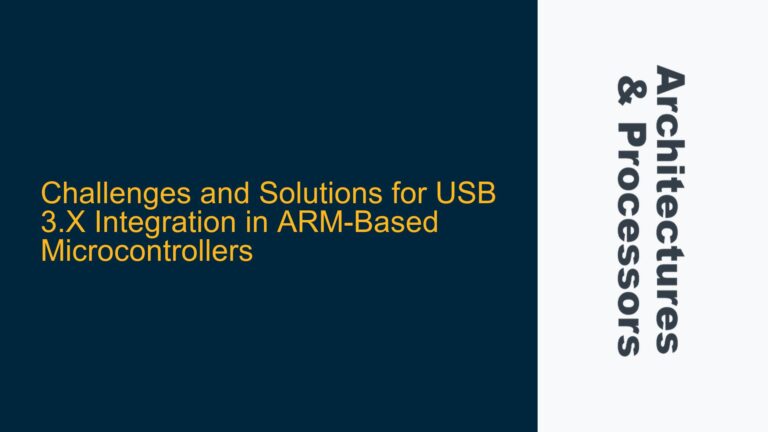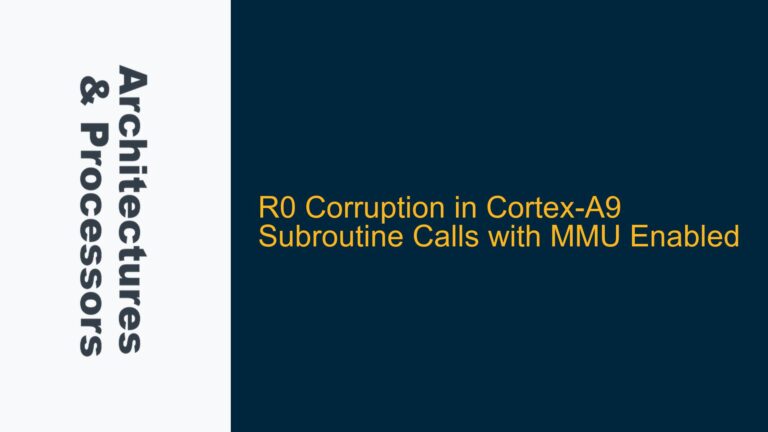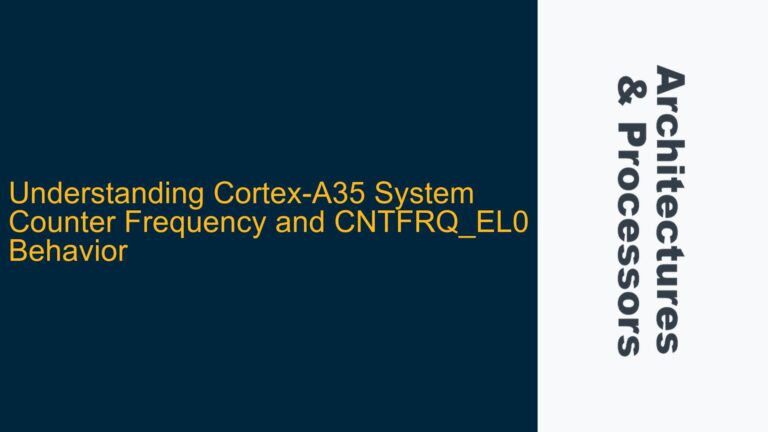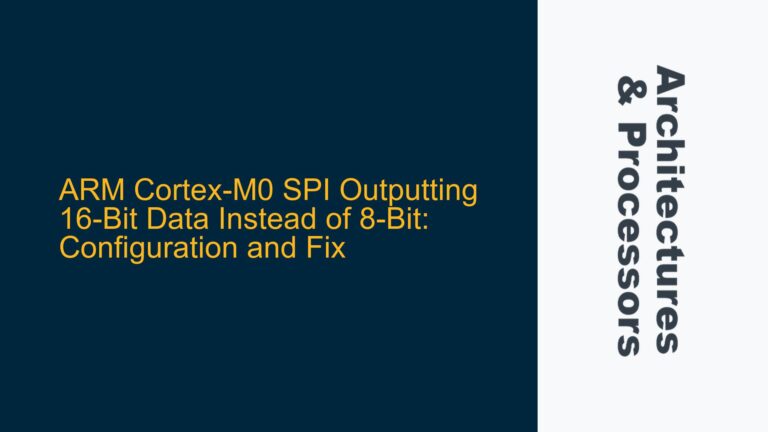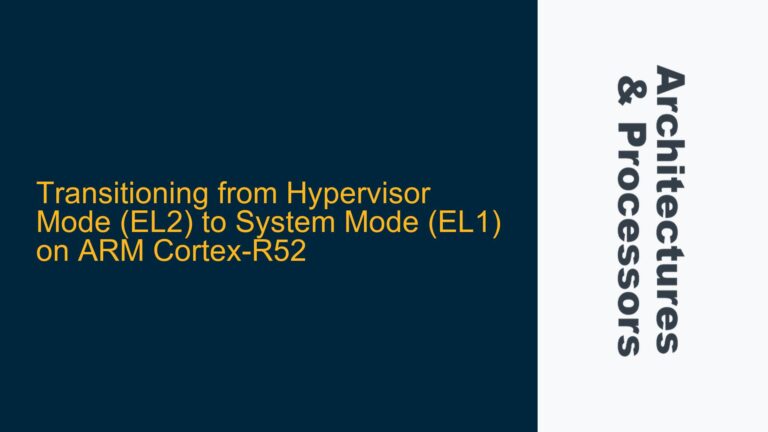GIC500 Interrupt Handling and Cortex-A53 CPU Interface Priority Mismatch
The core issue revolves around the handling of interrupts in a system utilizing the ARM Cortex-A53 processor and the GIC500 (Generic Interrupt Controller). Specifically, the problem arises when attempting to bypass the standard End of Interrupt (EOI) mechanism by directly manipulating the GIC500 registers via its AXI interface. The goal is to clear an interrupt without writing to the CPU Interface’s EOI Register, but this approach fails to properly clear the interrupt state. This issue is critical because it affects the system’s ability to manage interrupt priorities and ensure correct interrupt handling, which is fundamental to the stability and performance of embedded systems.
The Cortex-A53 processor, part of the ARMv8-A architecture, relies on the GIC500 for managing interrupts. The GIC500 is responsible for distributing interrupts to the CPU cores, prioritizing them, and ensuring that the CPU interface correctly acknowledges and clears interrupts. The CPU interface, in turn, communicates with the Cortex-A53 core to handle the interrupt service routine (ISR). The standard procedure involves reading the Interrupt Acknowledge Register (IAR) to acknowledge the interrupt and writing to the EOI Register to signal the end of the interrupt processing. However, the attempt to bypass the EOI Register and directly clear the interrupt via the GIC500’s AXI interface leads to a mismatch in the core’s running priority and the interrupt state, resulting in the interrupt not being properly cleared.
The key challenge here is understanding the intricate relationship between the GIC500’s interrupt state management and the Cortex-A53’s priority handling. When an interrupt is acknowledged by reading the IAR, the Cortex-A53 core inherits the priority of the interrupt. This priority remains active until the EOI Register is written, which resets the core’s running priority to its previous value. Bypassing the EOI Register disrupts this priority management, leaving the core in an inconsistent state where the interrupt appears to be active even though the ISR has completed. This inconsistency can lead to missed interrupts, incorrect prioritization, and ultimately, system instability.
Core Priority Inheritance and GIC500 Active State Management
The root cause of the issue lies in the interaction between the Cortex-A53 core’s priority inheritance mechanism and the GIC500’s active state management. When an interrupt is triggered, the GIC500 marks the interrupt as active and forwards it to the CPU interface. The Cortex-A53 core, upon reading the IAR, acknowledges the interrupt and inherits its priority. This priority inheritance is crucial for ensuring that higher-priority interrupts can preempt lower-priority ones, maintaining the system’s real-time responsiveness.
However, when the EOI Register is bypassed, the core’s running priority is not reset to its previous value. This means that the core continues to operate at the inherited priority level, even though the interrupt has been serviced. The GIC500, on the other hand, expects the core to signal the end of the interrupt processing by writing to the EOI Register. Without this signal, the GIC500 remains unaware that the interrupt has been serviced and continues to treat it as active. This mismatch between the core’s priority state and the GIC500’s active state leads to the interrupt not being properly cleared.
Another contributing factor is the direct manipulation of the GIC500’s active registers via the AXI interface. While it is technically possible to access these registers directly, doing so bypasses the standard interrupt handling mechanisms that ensure proper synchronization between the GIC500 and the CPU interface. The GIC500’s internal state machine relies on the EOI Register write to transition the interrupt from the active state to the inactive state. Without this transition, the interrupt remains stuck in the active state, preventing the GIC500 from correctly managing subsequent interrupts.
Implementing Proper Interrupt Handling with GIC500 and Cortex-A53
To resolve this issue, it is essential to follow the standard interrupt handling procedure, which includes writing to the EOI Register after servicing the interrupt. This ensures that the core’s running priority is correctly reset and that the GIC500’s active state is properly managed. However, if there is a compelling reason to bypass the EOI Register, additional steps must be taken to manually manage the core’s priority and the GIC500’s active state.
First, after servicing the interrupt, the core’s running priority must be manually reset to its previous value. This can be achieved by reading the current priority from the CPU interface’s priority registers and then writing the desired priority back to these registers. This step ensures that the core’s priority state is consistent with the interrupt handling process.
Second, the GIC500’s active state must be manually cleared by directly accessing the appropriate registers via the AXI interface. This involves identifying the specific interrupt in the GIC500’s active registers and clearing its active bit. However, this step must be performed with caution, as it requires a deep understanding of the GIC500’s register map and internal state machine. Incorrect manipulation of these registers can lead to unpredictable behavior and system instability.
Finally, it is crucial to ensure that all these steps are performed atomically, without any intervening interrupts that could disrupt the process. This may require disabling interrupts temporarily while performing the manual priority reset and active state clearance. Once these steps are completed, interrupts can be re-enabled, and the system can resume normal operation.
In summary, while it is possible to bypass the EOI Register and manually manage the interrupt handling process, it is a complex and error-prone approach that should be avoided unless absolutely necessary. The standard procedure of writing to the EOI Register after servicing the interrupt is the recommended method for ensuring proper interrupt handling and maintaining system stability. If manual management is required, careful attention must be paid to the core’s priority state and the GIC500’s active state, with all steps performed atomically to avoid race conditions and ensure correct operation.

